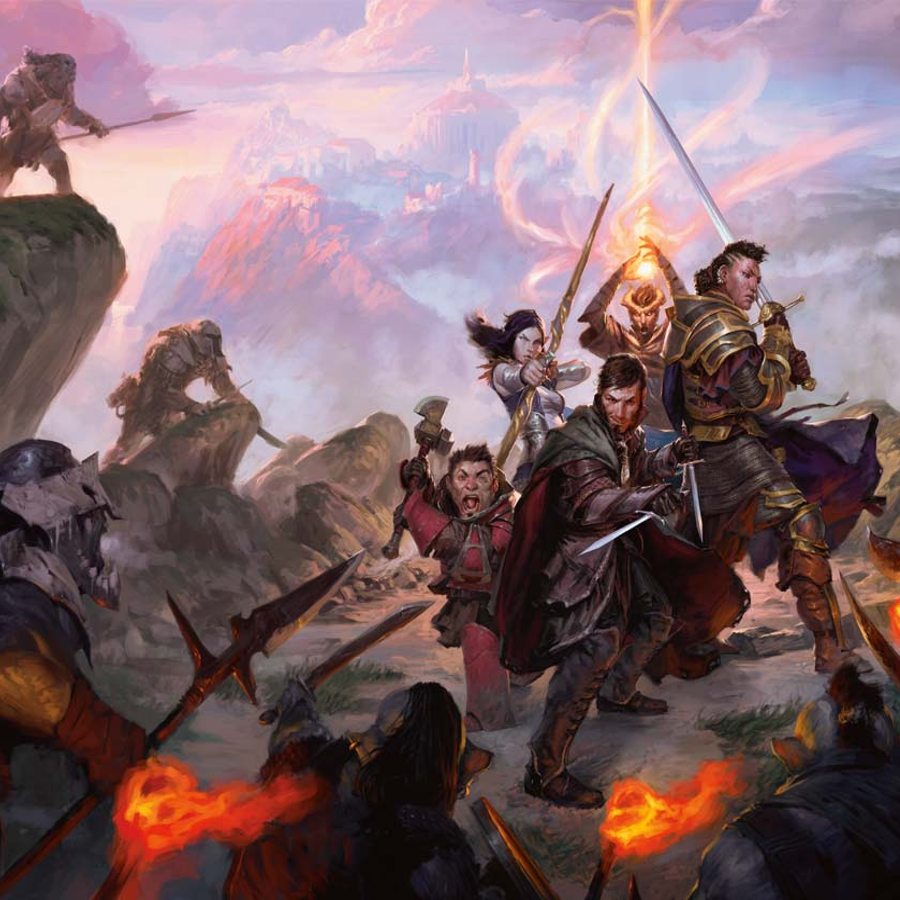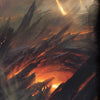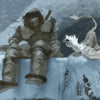How to Adjust D&D Adventures for Party Size and Level

Written by Luke Hart
This is the classic dilemma of the game master: you bought that cool new adventure module for your tabletop roleplaying game and are amped up to run it for your players. However, it’s designed for four players, and you have seven. Or it’s a level three through five adventure path, and your players are starting at level nine.
But don’t worry. You can still use those adventures because today, we’ll go over how to adjust the encounters in an adventure based on the number and level of characters. You’ll probably also want to consider adjusting ability checks and treasure, but those are topics for another day.
These concepts apply to many tabletop RPGs, such as D&D and Pathfinder. However, I’ll be using examples from D&D 5e.
Watch or listen to this article by clicking the video below.
#1 Adjust the Number of Creatures
You want to adjust the number of creatures when you are missing one or more characters, such as when a player is absent, but the group is at the correct level for the adventure or when the group is a level above or below what the adventure is designed for.
For example, let’s pretend you are running The Hunt for the Ring of Secrecy, a level seven adventure from the March 2023 issue of Lair Magazine, Endeavors & Exploration—our hex crawl issue—and you only have three players.
An encounter with one chimera and one chuul is designed to be a medium encounter, but with only three players, it is deadly. If we remove the chuul, it becomes medium; if we remove the chimera, it becomes easy. So, I’d probably remove the chuul, and then we can keep the intended difficulty.
Let’s say you have seven players for that same encounter, with one chimera and one chuul; it suddenly becomes fairly easy. So, let’s bump up the number of creatures. Adding one chuul makes it medium. Or we could add an additional chimera to make it hard.
If the group is a level above or below what the adventure is designed for, you’ll use the encounter calculator in the exact same way to get a difficulty match, but you’ll change the level of the players instead of the number of players.
Sometimes, you’ll find when using the calculator that the number or level of characters doesn’t change the encounter’s difficulty at all. In that case, you can either leave the encounter as-is or still adjust up or down slightly as a precautionary balancing measure.
Other times, there will be only one creature, say a flesh golem, and if the group has fewer PCs or is a lower level, you can’t really make there be zero flesh golems instead of one. That would be rather silly. This leads us to the next adjustment mechanism.
#2 Change the creatures
You can change the creatures when the group is at a much lower or higher level than the adventure was designed for or when there is a combination of more or fewer characters and a level difference of one or two. The combination makes these two factors add up. Adjusting the number of monsters might not be sufficient, and you’ll have to change out the creatures entirely. You’ll also use it if there is only one creature and you can’t adjust it down, such as in the flesh golem example I gave before.
Let’s go back to our example of running the level seven adventure from the March 2023 issue of Lair Magazine, Endeavors & Exploration; only this time, let’s say you have a group of level 17 characters. Now, the adventure is designed for between four and six characters, and you have five in your group, so you’re good on that front, but they are way over the level the adventure was designed for.
Let’s use that same one chimera and one chuul encounter again, which is designed to be a medium encounter for a level seven party. However, for a level 17 group, that encounter becomes trivial. Now, I could increase it to medium by increasing the number of creatures. For instance, if I make it four chimeras and two chuul, we get a medium encounter again. There would really be nothing wrong with that approach; however, it would probably be a bit more exciting to battle some higher-level creatures at level 17 instead of low-level pugs like chimeras and chuul.
So, let’s drop the chimera from the encounter and replace it with an aboleth, which thematically makes sense if we have chuul. But that still just gives us an easy encounter, so let’s increase the number of chuul to five. Bingo. We now have a medium encounter, and honestly, fighting an aboleth with five chuul cronies will be a way more interesting fight for a level 17 group than a handful of chimera with a couple chuul.
Of course, if the group is level three instead of seven, you’ll use a similar approach with the calculator, substituting in different creatures until you get a combination that gives you the difficulty you’re looking for. Ideally, of course, you’ll find substitution creatures that reinforce the theme of the adventure, though that isn’t always easy.
#3 Use Waves of Enemies
If the group is more powerful, either because they are at a higher level or there are more PCs, instead of just having one encounter, have two, where the second group of enemies arrives on round two or three. Usually, I roll 1d4+1 to decide when they arrive. Because you have two encounters coming down on them in a wave, it makes it harder.
Alternatively, if the group is weaker because they are at a lower level or there are fewer PCs, split one encounter into two encounters and have the second group of foes arrive in 1d4+1 rounds. This allows PCs to deal with a few from the first wave first, and then the others arrive, making the encounter easier with little adjustment or math needed from the GM.
#4 Adjust the Terrain
If a group is more powerful than the encounter or adventure was designed for, change the terrain so that it’s in the enemies’ favor, such as higher ground and prepared ambush sites. Make good use of terrain, and plan in advance how the enemies will do so.
If group is less powerful, do the opposite so the terrain doesn’t favor the enemies, and they don’t make good use of it.
Oh, I forgot to mention this earlier, but if you’d like the written version of this information for adjusting adventures, and made specifically for D&D 5e, we have a supplement titled Scaling 5e Adventures, available in the DM Lair Store.
#5 Compensate for Missing Roles
Depending on which roles are missing, compensating for them can be easy or hard to do.
For instance, if you don’t have a healer, you could give the players access to healing potions, or they could have an NPC hireling healer. For instance, in my Youngling group, my players are going through the Icewind Dale module. They’re finding that it’s very challenging for them. They have a full group and are mostly at the right level, but it’s still challenging.
To ease this a bit, they have a full-time hiring healer named Sally. She is a cleric of Torm, and she goes around healing them in the name of Torm. She’s very full of herself and her deity, which makes for a fun and entertaining moment every time they need healing. You could also have healers in town who offer services at reduced prices for such things as removing curses, poison, and resurrection.
If you don’t have any skill monkeys like rogues or utility casters like wizards, you could reduce the number of traps and other obstacles or allow mundane methods and character player creativity to overcome them.
If you don’t have any melee frontline types, that could be more challenging, but you could make the bad guys mostly ranged attackers or spellcasters to account for that.
Also, if you don’t have a “face” character with a high charisma who is good at social interactions, social interactions could be less about the PCs’ charisma checks and more about how well they roleplay the situation. Give the characters +5 bonuses or advantage on charisma checks if they do a good job, or just allow them to succeed if they RP the situation well.
I must say, though, my personal stance on the missing roles situation is usually that my game world doesn’t change. That is, I don’t adjust things; it’s up to the players to figure out how to overcome the challenges. However, I make exceptions, such as with my Youngling group; many are new players, and I focus more on just having fun game sessions and less on them being challenging . . . not that challenging isn’t fun, but different things appeal to different groups.
OK, great! You now know how to adjust adventures for the number of characters and their levels, but what if you want to use an adventure designed for D&D 2nd or 5th edition? Or, you’re now running Pathfinder 2e games like I am, and you don’t want your library of D&D 5e modules to go to waste? Well, you can watch this video right here, and I explain how to convert adventures and modules from one edition or system to another.
Get Loads of 5e Adventures and Resources for Your Games!
As a new dungeon master, I was overwhelmed with everything I needed to do. Learn the rules, create the adventures, run the game, handle problem players—it was A LOT! And even as a veteran DM, it’s still a lot. You might even feel that way yourself.
If you’re looking for loads of 5e adventures that you can prep in under 30 minutes or elements such as traps, puzzles, and encounters that you can drag and drop into your game at a moment’s notice, we have you covered!
With Lairs & Legends and Loot & Lore, you’ll get over 700 pages of 5e resources:
- Twenty-nine 5e adventures spanning levels 1 to 15 and designed for groups of 4 to 6 players.
- Over 100 new creatures from CR 0 to CR 24.
- Adventure Ideas
- Encounters with Full-Color and Blackline Digital Maps
- Patrons & Factions
- Magic Items
- NPCs
- Puzzles
- Random Encounter Tables
- Random Tables
- Spells
- Subclasses
- Traps
- Villains
Everything is designed to be EASY TO USE and QUICK TO PREP for your game. Our goal is to make game masters’ lives easier, not more complex!
Don’t spend another moment frustrated and overwhelmed as a GM. Pick up the Lairs & Legends Ultimate Bundle today and find out how much easier being a GM can be!
-
Posted in
Game Master How-To Articles







